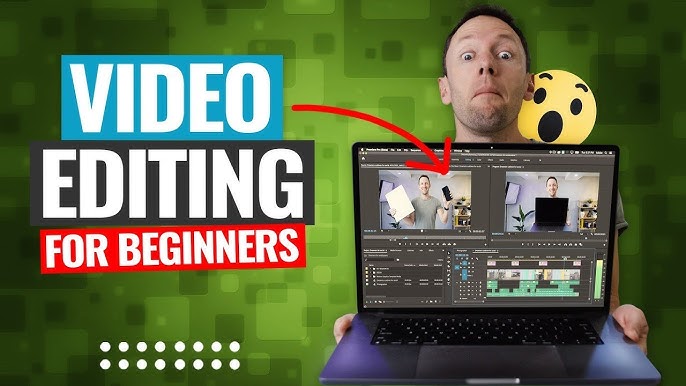How to Use Video Editing Tools
How to Use Video Editing Tools
Video editing tools help you turn raw footage into something amazing. Whether you’re a beginner making videos for fun or a content creator growing a brand, learning how to use these tools can take your work to the next level. This article will guide you through the basics of using video editing tools with simple steps, tips, and explanations.
What Are Video Editing Tools?
Video editing tools are software programs that help you cut, rearrange, and enhance videos. They let you add music, text, filters, transitions, and more. Some popular video editing tools include:
- iMovie (Mac/iOS)
- Adobe Premiere Pro
- Final Cut Pro
- DaVinci Resolve
- CapCut (Mobile/Desktop)
- Filmora
You can use these tools on computers, tablets, or even phones, depending on the software.
Step-by-Step Guide to Using Video Editing Tools
Let’s walk through how to edit a video using any basic video editing software. The interface may look different depending on the tool, but the steps are usually the same.
1. Import Your Media
Start by adding your video clips, music, and images into the editor.
- Open the software.
- Click Import or Add Media.
- Choose files from your device.
- Drag them into the timeline or project panel.
📝 Tip: Organize your files before importing so everything is easy to find.
2. Trim and Cut Clips
Use the cut or scissors tool to trim extra parts.
- Select a clip in the timeline.
- Drag the ends to shorten it.
- Split clips in the middle to remove or rearrange sections.
📝 Tip: Use keyboard shortcuts for faster editing (e.g., “C” for cut, “V” for select).
3. Add Transitions
Transitions make your video flow smoothly from one scene to another.
- Go to the Transitions tab.
- Drag a transition (like fade or slide) between two clips.
- Adjust the duration if needed.
📝 Tip: Don’t overuse transitions — keep it simple and clean.
4. Insert Text and Titles
Add names, captions, or credits to your video.
- Click on the Text tool.
- Choose a style (basic, modern, cinematic, etc.).
- Type your message and place it where needed.
📝 Tip: Make sure the text is readable. Use clear fonts and enough contrast with the background.
5. Apply Filters and Effects
Filters change the mood, while effects make scenes pop.
- Browse the Effects or Color section.
- Drag a filter or effect onto a clip.
- Adjust brightness, contrast, or saturation as needed.
📝 Tip: Use effects to support the story — not just for decoration.
6. Add Music and Sound Effects
Audio is half the experience in any video.
- Import a music track or choose one from the tool’s library.
- Drag it to the audio track under your video clips.
- Adjust volume, fade-in/out, or sync it with actions in the video.
📝 Tip: Make sure music doesn’t overpower spoken words. Balance your audio levels.
7. Use Layers (Advanced Tip)
Some tools allow multi-track editing.
- Place text, images, or other video clips on different layers.
- This helps create picture-in-picture or overlay effects.
📝 Tip: Layers are powerful — but keep things organized so your timeline doesn’t get messy.
8. Preview and Fine-Tune
Watch your whole video before finalizing.
- Hit Play in the preview window.
- Fix any timing issues, cut unwanted pauses, or adjust transitions.
📝 Tip: Take breaks while editing. A fresh look helps spot mistakes.
9. Export the Final Video
Time to save your masterpiece.
- Click Export or Render.
- Choose the format (like MP4), resolution (1080p, 4K), and location to save.
- Let the software process and create the final video file.
📝 Tip: If uploading to social media, choose settings like 1080p MP4 — great balance of quality and file size.
Best Practices for Beginners
Here are some helpful tips if you’re new to video editing:
| Tip | Why It Matters |
|---|---|
| Keep it simple | Too many effects can confuse your viewers |
| Save often | Avoid losing progress due to crashes |
| Use B-roll | Add extra clips to make your video more engaging |
| Learn shortcuts | Saves time when editing long videos |
| Watch tutorials | Every tool has free tutorials online |
Recommended Tools by Skill Level
| Skill Level | Recommended Tools |
|---|---|
| Beginner | iMovie, CapCut, Filmora |
| Intermediate | Adobe Premiere Elements, DaVinci Resolve |
| Advanced | Adobe Premiere Pro, Final Cut Pro, Avid Media Composer |
Final Thoughts
Learning how to use video editing tools takes time, but it’s a fun and rewarding skill. Start with the basics: trim clips, add music, insert text, and use transitions wisely. As you grow more confident, explore advanced effects and layering techniques. The best way to improve is by practicing — the more you edit, the better you’ll get.
So, open your favorite editing tool and start creating. Your next great video is just a few clicks away.







